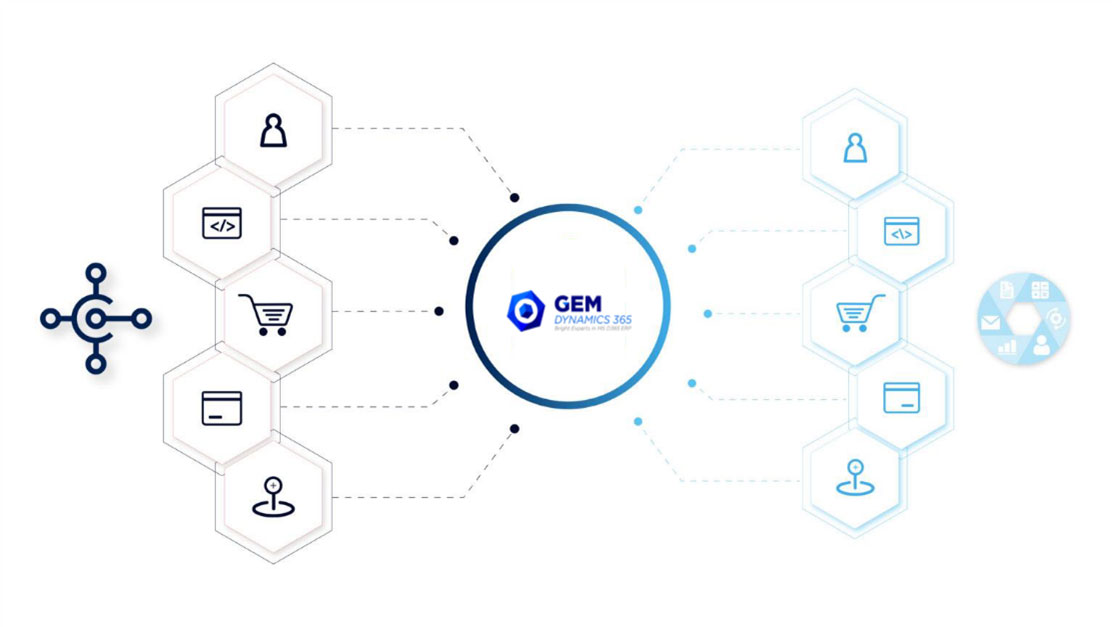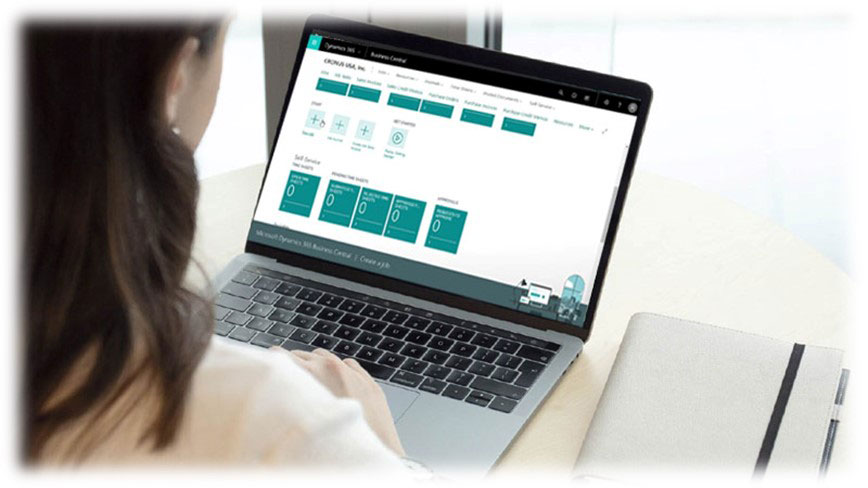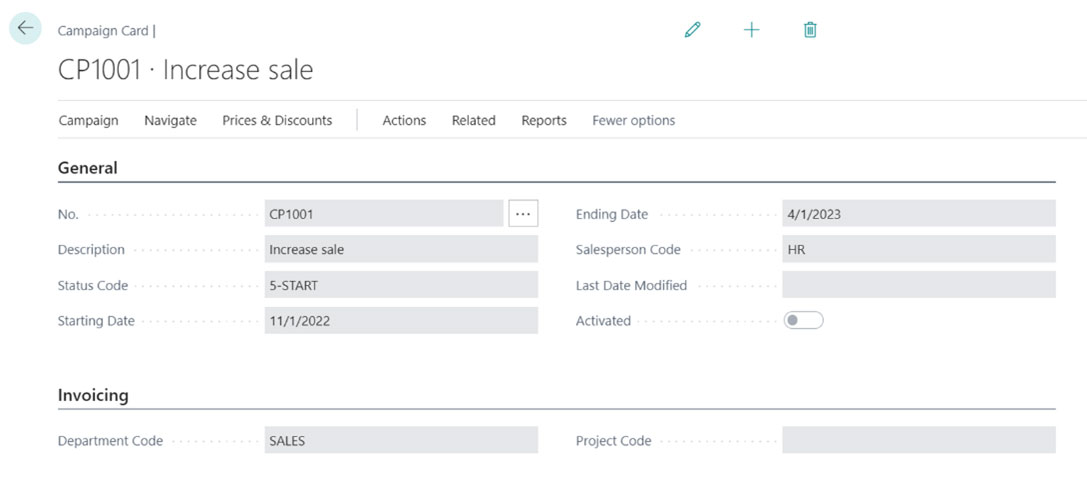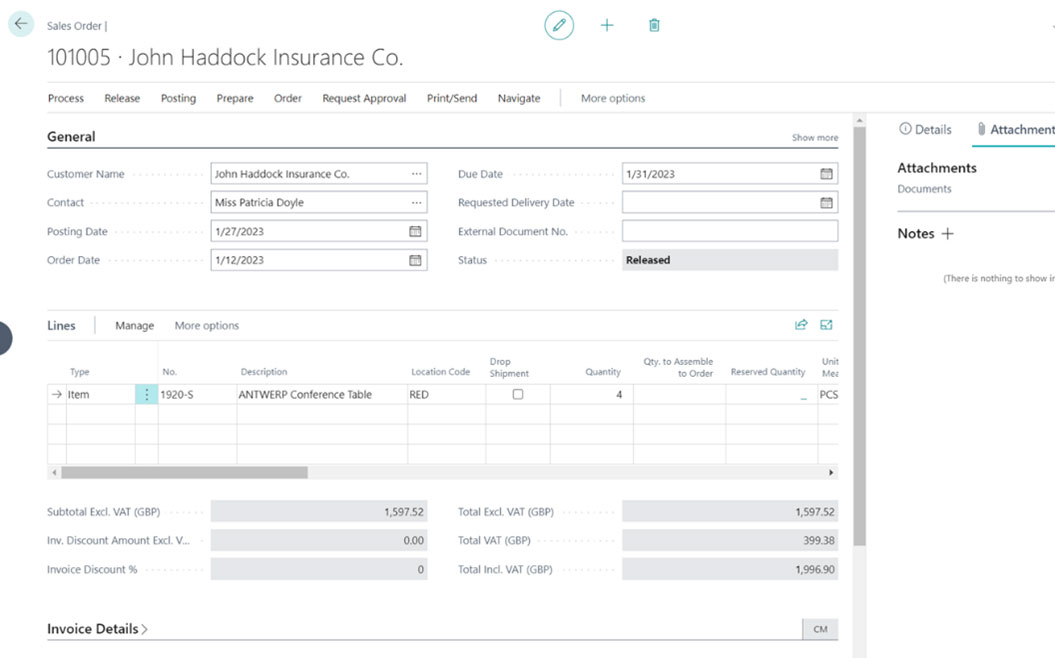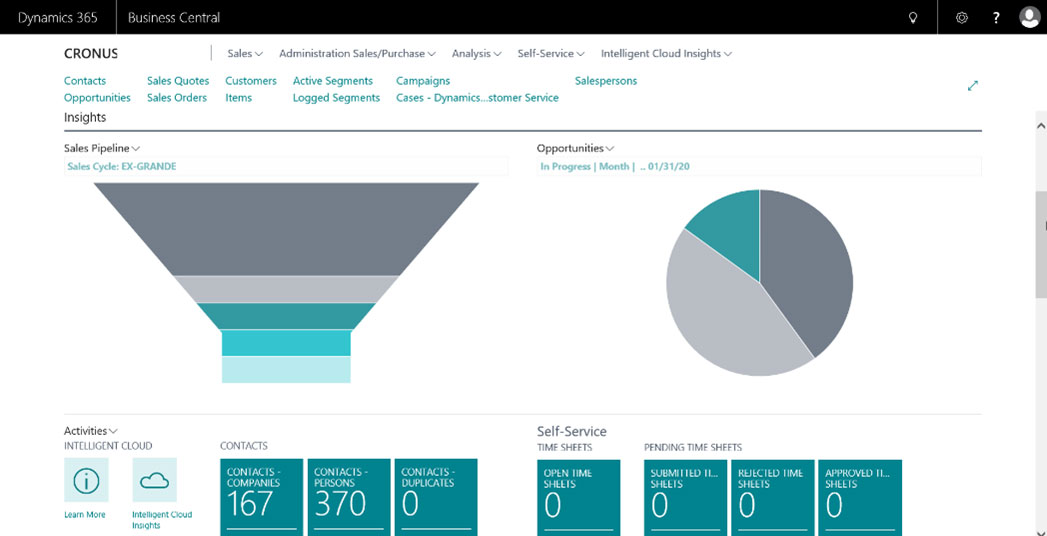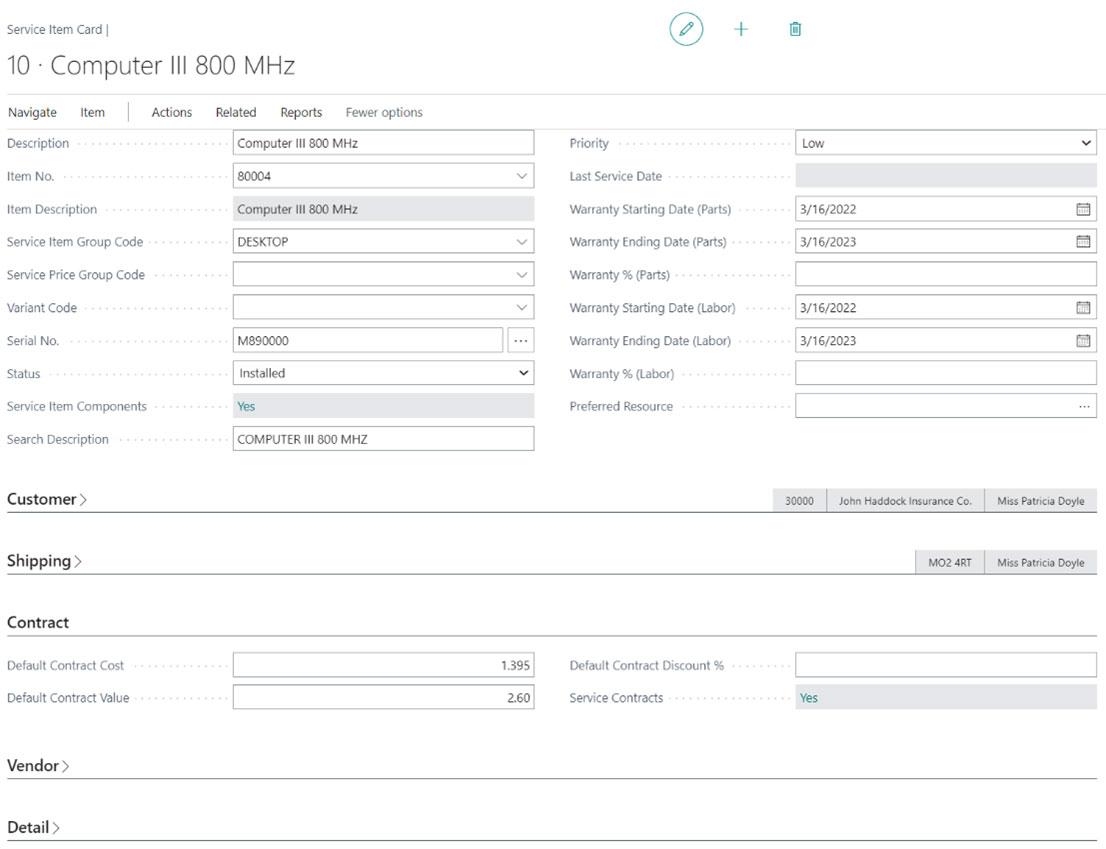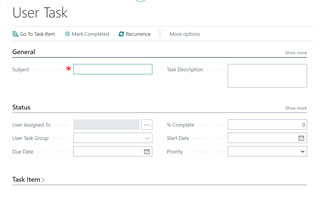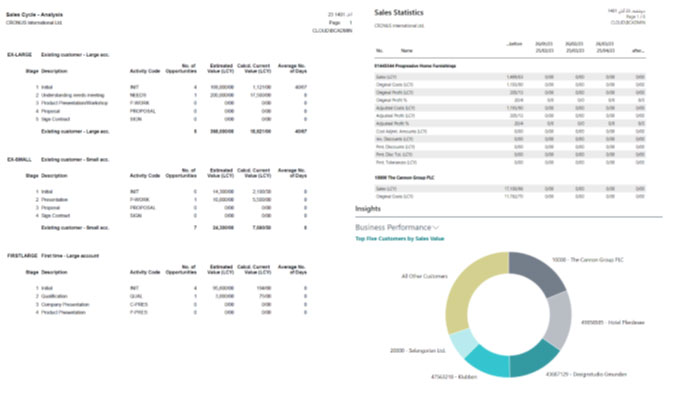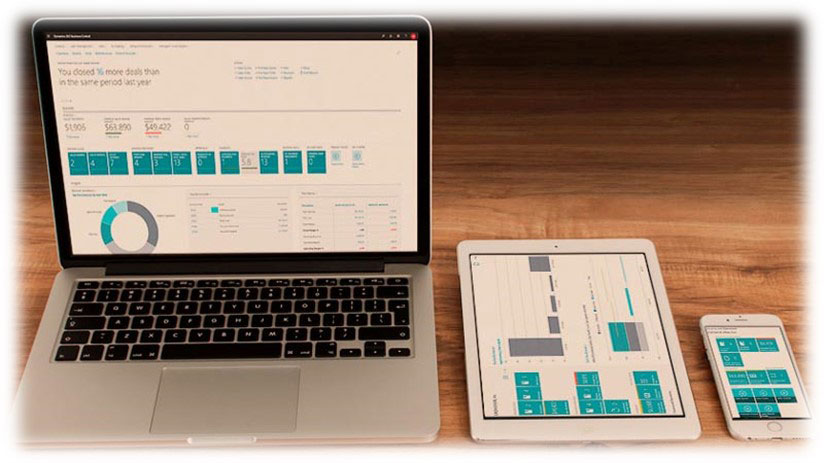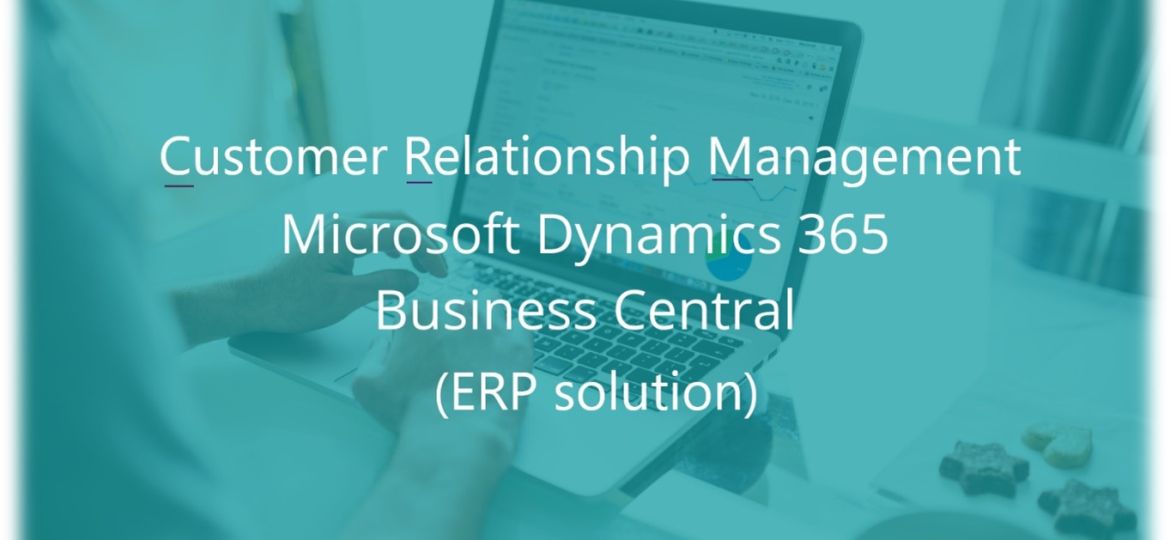
Meeting all customer relationship management (CRM) needs is very important in almost all businesses, and maintaining customer records and documenting all sales and marketing activities and interactions, sent offers, volume of transactions, etc. is essential in both B2C and retail and also B2B businesses.
It should be noted that customer relationship management is primarily a management concept and its purpose is to obtain customer satisfaction, customer loyalty, and creating a long-term relationship with customers with the aim of developing and growing the organization’s market, and in order to follow these concepts, tools like MS D365 for Sales have been developed to facilitate relationship management.
Many organizations cannot manage their business properly without having a good CRM software. The need to create order and follow up on the time and performance of customer-related matters depends on the establishment of a CRM system that fits business and needs of the organization.
Several products have been developed under the title of customer relationship management system, including the Microsoft customer relationship management solution known as Dynamics CRM or more fully known as Dynamics 365 for Sales, which includes sales, marketing and service modules, which, have been used by Many organizations. If you need more information about this product, you can refer to the Gem Dynamics365 website under the solutions menu. But in this article, we intend to explain whether the needs of customer relationship management in the organization can be met by implementing D365 Business Central ERP, or whether a separate CRM should be used in parallel. To answer this question, we will first express common expectations and requirements from a customer relationship management system.
What are the capabilities that should be included in a customer relationship management system and what are the main features?
When we talk about CRM, we expect to cover those entities that are directly related to customers in the system. These things are not necessarily the same in different software, but in general, you can express your expectations from this system like this:
- include the form and processes of the marketing which results in the creation of new potential customers and precedes the sales operation.
- It includes the form and processes of the sales department, which includes maintaining customer records, documentation, sales documents, etc. until the end of the sales operation.
- The form and processes of the after-sales service department, which will support the warranty and after-sales services after the sale is occurred.
- The management of tasks around the above-mentioned processes, which ensures the correct and timely execution of tasks.
- provides dashboard and required reports, and has the flexibility to create new reports and produce reliable outputs.
- The structure of the database should be standard and prevent the generation of parallel and duplicated data.
- It has the possibility of connection with communication channels with customers such as email and SMS.
- It has the necessary flexibility to implement the business model of each organization in the above sections.
- support the possibility of connection with customer-facing solutions such as online shops and portals, customer club, e-commerce, etc.
- possibility of use by distributors and sales representatives who are not in the office.
As mentioned, the features in each CRM system can be different. However, these are general conditions that a CRM system can be examined and judged. In the following section, we will examine the features of the Microsoft D365 Business Central ERP system in the field of customer relationship management (CRM) and at the end we will answer the question whether with the establishment of this ERP, there is a need to use a seperate CRM system or not.
Customer relationship management capabilities (CRM) in ERP Microsoft D365 Business Central ERP
We know that ERPs are comprehensive and integrated solutions that have standard processes based on Best Practices in the APQC framework. Microsoft D365 Business Central is also a well-known ERP, where hundreds of thousands of organizations manage their business on this platform. In the following, we will review the features of this system in the field of CRM:
1 – Marketing functions
Marketing features under the sales module, provides the possibility of defining types of marketing campaigns, periodic price lists, defining activities and assigning them to teams, calculate campaign costs, and finally the results and effectiveness of marketing campaigns assessment.
2- The sales area
the sales module in this system includes complete features of basic data such as contacts and customers, sales teams, sales documents such as quotes and sales invoices, sales contracts, returns from sales, pricing of goods in different methods, profit analysis, etc.
3- Sales interactions and Opportunity Management
Sales Opportunities and records of interactions with customers can be completely managed in this system according to the stages and sales processes of the organization. It is also possible to define contacts as basic data in the system and convert them into a customer, vendor/bank/employee in the future. In addition, it is possible to define a questionnaire and receive information in the form of questions and answers in the early stages of communication with the potential customers. The concept of Contact in this system is the sales Lead, which is used to record the initial stages of interactions, and then it can become a Customer, and the interactions then will continue in the form of a sales Opportunity.
4- service module and after-sales services features
the service module in this system has complete facilities for after-sales services, including the formation of after-sales service profiles for each sold product, warranty and guarantee of products, registration of service documents, used spare parts, etc. It manages the recording of failure causes, type of service, possible solutions, tracking with serial number and determining the route of support request. It is also possible to define resources including man and machine and define a time sheet for these resources to provide service and calculate the capacity, cost and income of these resources. This module makes it possible to use the serial number and batch number to track the goods from the beginning to the end of the process.
5- Possibility of connecting to customer communication channels as well as customer side software (Front End)
The possibility of connecting to customer communication channels such as email, SMS, messengers and VOIP is fully available in this ERP system. It is possible to send files directly from within ERP through Outlook. The format of the output file can be arbitrary and based on the format of the organization and its branding, and there is no limit in defining formats and output format of the documents. Also, you can see real-time and online reports of the email sender’s status based on ERP data in outlook. In general, this system has the maximum flexibility in terms of the possibility of connecting to external systems and produces unlimited and free web services (web services and APIs). Therefore, it is possible to connect to any external software and hardware, provided that the desired 3RD Party systems is also able to connect. This possibility of connection also includes connecting to hardware such as barcode reader, RFID, payment terminal, printer as well as software such as portal, customer club and e-commerce platforms.
6- Task management
Task management is one of the general parts of this system in all modules. Therefore, in all forms, including sales order, sales invoice, sales opportunity, marketing campaign, service order, etc., and in all stages, there is the possibility of defining tasks for yourself or others. It is also possible to generate automatic tasks based on workflows. Therefore, the management of the tasks of individuals and teams is also embedded in this system, and tasks can be tracked, managed, and reported.
7- Single and integrated database
The standard database structure in standard ERP solutions such as ERP Microsoft D365 Business Central is one of the important and key strengths of these systems. This system is integrated and between all its modules, including financial accounting, sales and marketing, purchasing and supply, manufacturing and production, warehouse and inventory, service and after-sales service, project and employees, standard and optimal communication is expected, and all the data is stored in a single database (SQL Server). Therefore, each data is generated only once in the system and is used in all modules, thus the possibility of discrepancies and errors with system controls is minimized and the reports are always up-to-date and reliable. Keep in mind that in the ERP system, in addition to managing relationships with customers, manages relationships with vendors in the purchasing and procurement module, and it is also possible to define the organization’s personnel, banks, etc. Also, in holding companies, inter-company communication can be managed in this syste. Therefore, in general, much wider parts of communication with stakeholders are covered in this ERP system compared to the CRM system. This integrated structure also provides the possibility of flexible reporting based on the current needs of each organization.
Along with more than 600 ready reports in the system in different modules, it is possible to create new reports with desired format and content. In addition, matrix report generator and analytical tools are available based on desired parameters in various modules.
8- Organization-specific implementation and considering business logics for each company
One of the aspects of ERP solutions is that the software package is not ready to use and is not sold as a ready product, but it has an important implementation process for each organization, which includes recognizing, Analysis, design, modeling, implementation, development and training. Every business, depending on the context of activity, needs to define certain areas in the field of communication with its customers. For example, many companies use SMS panels to inform the customer about the sales process. Some businesses need to receive orders through a connected system like portals. Some companies need to use serial number and batch number to track their sales and after sales activities. Some trading companies have direct sales from their suppliers, which means that the goods are sent directly by the vendor to the customer (Drop Shipment), also some businesses need to reserve warehouse entities for some have their own sales orders or production orders. These items are some of the scenarios that are needed in the management of different businesses, and the required business scenarios are not limited to these items. But the principles and platform impower us to implement all these scenarios in 365 Dynamic Business Central and requirements will be considered for each organization during the implementation process.

9-Using Android and iOS application
Dynamics 365 Business Central solution has a full application for Android and iOS. Therefore, if you have mobile forces such as representatives of the organization, visitors and distributors, project managers, etc., who need different places access, this possibility is available to you through ERP applications. Therefore, challenges such as registering customer orders on site, issuing sales invoices, checking inventory, latest prices, active discounts on items, etc., are available online. In addition, the managers can also access the reports and forms they need in different situations for approvals and monitoring of the job. In addition to the application, there is also web-based access, and access levels are set very precisely and based on the role of people. It should be noted that different security protocols can be created to access the system to increase the security level of using the system outside the organization.
According to what was mentioned above, the Microsoft D365 Business Central ERP system includes all the capabilities needed in the customer relationship management, and if this comprehensive system is installed, there is no need to prepare a separate system for CRM. Of course, keep in mind that if an organization has a CRM system in its current condition and has done a significant amount of development and customization on that platform, one scenario could be to maintain the current CRM software and establish a connection with ERP at the connection points. Otherwise, for organizations that do not have a CRM or have a small and limited CRM, all processes can be implemented in an integrated on ERP Business Central platform.
Conclusion
Based on what was mentioned in this article, the components of a customer relationship system (CRM) are fully covered in ERP Microsoft D365 Business Central. These components briefly include marketing, sales, after sales services along with all related documents and processes in a standard and integrated manner, as well as additional items including task management, saving record and customer interactions, ready application, communication with customer communication channels or Front-end software like a portal and finally the implementation of the system is specific in every organization with the relevant business logics. Therefore, with the establishment of ERP Business Central, the organization’s requirements in the field of CRM are fully covered and there is no need to provide a parallel system. Only in organizations where there is an existing CRM with a significant amount of developments and customizations, a scenario of maintaining the current CRM system and establishing a connection with ERP at data sharing points might be on the project agenda, and in other cases, all customer needs are modeled and implemented in the ERP system.



